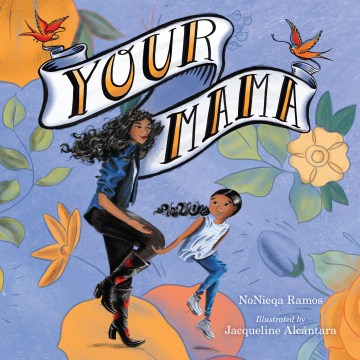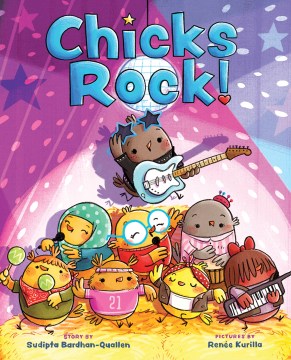It’s a nice little picture book biography of a little-known (at least not to me) individual. Perhaps the subject is more well-known in art circles. Regardless, it would certainly make a nice addition to a collection with a strong art or religious focus. The story is told in a simple and direct manner for young children, infused with a sense of the joy and hope that it describes the Corita striving to share. The author’s note in the back is important to fleshing out the context for the story told in the main body of the book. It would have been enhanced by a few actual photos of the real individual and/or some samples of her art.
Category Archives: Additional Purchase
Recipe for Disaster
by Aimee Lucido
Following her best friend’s amazing Bat Mitzvah, Hannah begins plans for her own. Hannah’s parents do not support this decision. Her mother, though Jewish, does not practice Judaism, and her father was raised Catholic. Hannah may be drawn to the Bat Mitzvah, not for the spiritual meaning, but for the glamour of the event. While Hannah explores her Jewish identity, relationships with her family members and friends take big hits and secrets are revealed. Told with plenty of humor, this middle school novel is full of drama, self-awareness, and recipes!
Your Mama
A book reminiscent of the old “Your mama so…” sayings, but with some very surprising and positive twists. Told in rhyming text, this picture book looks at a mama that can do and be anything. She dresses beautifully, is a brainiac and fights injustice. She is as strong as a Marine and so funny. Yet, she can sometimes be “cray-cray”. But, that’s ok, because she wouldn’t have it any other way”.
Colors are vibrant and most characters are people of color. The universal theme of love and joy shared by a mother and child are celebrated in exuberant text and illustrations. My only caveat is the use of “your mama” over and over. Will young children understand that it’s a twist on a tired, old joke? I’m not sure. The illustrations are contemporary as is much of the language. Perhaps, young readers will overlook the redundant use of that tired phrase.

Chicks Rock!
Every chick has a talent and Rocker Chick’s is music. She can play the guitar and belt out a tune better than any other chick. One day, she receives an invitation to headline a show and excitedly prepares for her big debut. On the big night, she steps on stage and freezes. Oh, no! Fortunately, her friends are there to support her using their unique skill sets. For example, Pop Chick teachers her dance moves and Artsy Chick does her makeup. My favorite is Zen Chick, who helps with stress. In the end, Rocker Chick overcomes her fear and rocks the crowd and thanks her “team”, who realize that they can achieve anything with the help of their friends.
This is a colorful, rollicking story told in rhyme. It moves along nicely and the end has a sweet message. This book is a nice addition to social-emotional collections.

Moth & Butterfly
Moth & Butterfly, written by Dev Petty and illustrated by Ana Aranda is a cute friendship story. The two friends begin as caterpillars who have so much in common, they enjoy playing together, eating together, and dancing together. But, as in any lifecycle of a caterpillar, they go through their metamorphosis and when they emerge, they discover they are very different now! Out pops Butterfly and then out pops Moth! They have changed! Their wings look different, their colors are different, their antennae are different. They also notice that they have different behaviors – Moth darts, whereas Butterfly is graceful, Moth loves night and Butterfly loves the sunshine. They have grown up and their differences start to keep them apart. Despite these differences, Moth and Butterfly find they still do have a few activities (like dancing) in common.
I enjoyed this classic friendship tale where two best friends grow up and apart and have to find each other again. But, I think what I enjoyed most is that you also learn about some of the differences between moths and butterflies.
This book has great illustrations filled with movement and vibrant colors.
If you have a class studying butterflies in science this would be a great addition. It would also fit in with many SEL curricula when talking about overcoming differences and friendship.
The Thing Lenny Loves Most About Baseball
Lenny loves baseball and he loves reading in his Big Book of Baseball Facts. He wants to play in the big leagues one day. In his very first game a ball is hit to him, but Lenny hides behind his glove. Lenny decides that he loves reading about baseball, but he is not good playing at it. His dad says that he just needs to practice. Lenny’s dad helps Lenny practice catching pop flies. Lenny learns that he does not have to be great all of the time and at everything.
I See You See by Richard Jackson
Maisie’s mom asks her to walk the dog – and Jonah, her younger brother in a wheelchair asks to go along too. While Maisie struggles with the dog and pushing the wheelchair, Jonah’s imagination brings the walk alive. From a tree of cats and bell machine, to a popsicle garden and a sky slide, Jonah shares his joy. As the walk progresses, Maisie begins to see the world through a more imaginative lens, changing a chore into something filled with fun and laughter.
I See You See is a celebration of imagination and the bond between siblings.
Kaleidoscope, by Brian Selznick
Like an ever-shifting scene in a kaleidoscope, the stories in this book have fragments in common – characters, themes, settings, objects. Each story starts with a kaleidoscopic image from a full drawing on the next page. Each image is related in some way to each story. Each story could be read separately. Taken together, they’re like a strand of unique beads on a very strange necklace. They go together, but it’s hard to find a common message. I enjoyed reading the stories. They were fantastical and strange and mysterious- each a little gem. I kept feeling like I was missing the bigger point of all of them put together however. The author’s note at the end explains that he had been working on a different project prior to the pandemic and then deconstructed it into these loosely connected stories during the quarantine. This makes sense, but in terms of handing this book to a middle schooler… I’m just not sure it’s going to make much sense. It might be an interesting book for a book group to discuss since the overall book still feels very mysterious & unexplained to me.

Twinkle Twinkle Little Kid, by Drew Daywalt
While the title suggests the childhood song Twinkle, Twinkle Little Star, the story is instead built around the nursery rhyme, Star Light, Star Bright. A young boy wishes on a star while at the same time a star is wishing on a little kid. Both are disappointed when their wishes don’t come true.Each wonder about the other’s wish. Did they wish for checkers? A tent? A frisbee? Walkie-talkies? Clyde cannot figure out what the star wished for. Finally both realize they each wished for a friend. Together they enjoy checkers, a tent, frisbee, and the walkie talkies; never having to worry about a lack of a friend again.
Twinkle Twinkle Little Kid is a sweet story with charming illustrations that would do well as a bedtime story, but lacks the humor and kid appeal of Daywalt’s other books.
The Barking Ballad: A Bark-Along Meow-Along Book
The Barking Ballad by Julie Paschkis is an interactive picture book. The author has used a stanza from Oliver Goldsmith’s poem “An Elegy on the Death of a Mad Dog” to build her own poem. The book starts out with a cat that was left behind when someone moved away and she is wandering around alone and hungry. One day a dog is hit on the head by a falling rock and the cat takes care of the dog. Soon the cat and the dog are friends and are inseparable.
Throughout the book, the reader will find red dots which mean the readers should bark and yellow diamonds which mean the reader should meow. In a read-aloud, the reader would need to figure out a way to demonstrate when the audience should bark or meow. This book is geared towards pre-readers but there is some vocabulary that would need to be defined for them (bereft).
